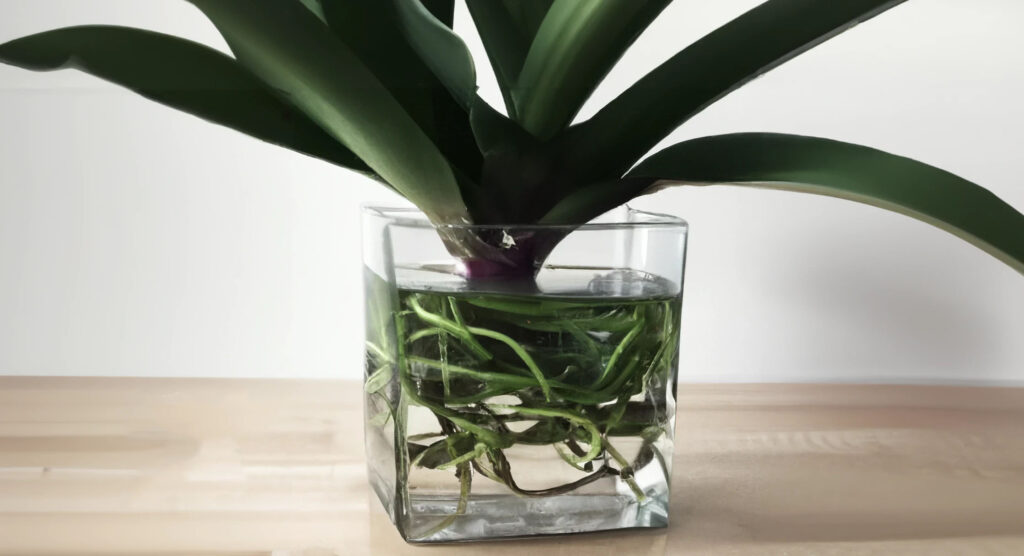
Blooming orchids planted on the water will surely increase your indoor beauty. Planting plants in water is called water culture. The question is, is water culture applicable to orchids? Can orchids grow in water?
The answer is a bit tricky. Growing orchids in water might be a great pain for someone who doesn’t know how to care for them, which species qualify for water, the whole painting process, etc.
The quick answer is growing orchids in water is possible but the process must be known. Most of the orchids grow in tropical rainforests with humidity. So it’s not a bad idea to grow orchids in water as they can tolerate water naturally.
Here we are to guide how you can grow orchids in water.
Here you will learn
- Choose the right type of orchid
- Choose a container
- Water preparation
- Planting
- Care and attention
So let’s go over the topic
Choose the right type of orchid
75% of orchids grow in tree barks and sometimes in the rocks. These species are called epiphytical orchids. Only they are suitable for surviving in water. On the other hand rest of the orchids (terrestrial) that grow in soil are not applicable to water.
Now you know that all orchids are not a good candidate for the water culture method. Check out your orchid species’ natural habitat before planting in water.
Some common epiphytic orchid species are Phalaenopsis, Cymbidium, Vanda, Dendrobium, Oncidium, Epidendrum, Cattleya, and Miltonia. They are safe to go in the water as most of the orchids are epiphytic.
On the other hand, Paphiopedilum is terrestrial. They are mostly chosen species for ornamental beauty by gardeners. You may have unique species research them where they belong to, which region they naturally grow, which temperate is safe for them etc. This will give you a clear idea about their behavior and how much attention you should give.
Choose a container
Unlike succulent containers, orchids need a big container so that their messy roots have enough space to grow well. Select a container with transparent or semi-transparent to allow light to penetrate. The container can be plastic or glass whichever material you choose. Better if you choose a container with a cover or lid so that in can create a greenhouse effect to maintain humidity.
Water preparation
Use purified o distilled water, or tap water it doesn’t matter as long as you are using purified water. It must not contain any chemicals or bacteria. You can use carbon peroxide to make sure any bacteria don’t grow in water (5-10mg). Pour the water into the container and put some pebbles if you like.
Planting
Carefully remove the orchid from its pot now rinse the roots to extract the remaining potting medium. Any potting mix that is not extracted can cause a great problems like turbidity of water and contamination of water with bacteria etc. Then place the orchids in the water ensuring the roots are submerged in water. Use stone or anything you like to make sure it doesn’t float.
Care and attention
Orchids love high humidity. To create artificial humidity wrap with plastic or glass-type anything to create a greenhouse effect. Make sure the wrap, lid, and cover are not touching the orchid leaves to keep them safe from rot.
Place the container near a window with filtered sunlight. They still need a good amount of indirect sunlight to survive healthily.
Change water every two weeks to four weeks to prevent the build-up of algae and other impurities. While changing the water rinse the roots carefully to remove any accumulated debris.
Keep checking your orchid health. If you notice any sign of root rot like brown or mushy roots, cut the part immediately before it spreads more. If the orchid becomes too large for the container, consider transferring it to a large container or moving it into soil.
Use diluted orchid fertilizer once every 2 to 4 weeks according to manufacturer instructions.
Typically orchid’s lifespan is around 10-15 years. Obviously, it is not a good idea to keep them in water for that long. Transfer it to a potting mix when it becomes large and produces more stems, roots, and leaves.
If you want to know more about orchids visit them.
